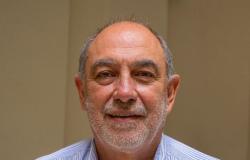Since 2021, the first level of care has recorded a drop in public employment of 1,685 fewer professionals, but in hospitals the number of Family members has gone from 3,419 to 6,831.
Hospital or health center? Where are there lack of doctors? The truth is that if there is a healthcare problem at the first level, in primary, it is also due to where the chips are placed, or rather what is the destination of the human resources, the professionals. This situation begins at the time of choosing training, but also where more hiring is offered and how some positions or others are incentivized.
Therefore, through he Specialist Needs Report 2023-2035 that the Ministry of Health You can take an x-ray of where the doctors are, or what is the same, the figures that draw that distribution of employment.
The analysis, prepared by Patricia Barber and Beatriz González López-Valcárcel, from the University of Las Palmas de Gran Canaria, indicates that between 2021 and 2023, the regional health services of the different autonomous communities registered “a 9.8% increase in the number of doctors hired“, going from “136,344 counted in 2021, to 149,710 in 2023”.
However, and despite this increase in the hiring of physicians, the authors point out that this global growth of almost 10% “includes variations between specialties and particularities between care levels“. And according to the analysis carried out, “while medical employment in public hospitals grew by 16% in those two years, with an additional net hiring of 15,051 doctors, primary care suffered a drop of 4% among its medical staff. (1,685 fewer professionals)”.
Furthermore, in five years, that is, between 2018 and 2023, “primary care has been losing specific weight in medical human resources” by dropping “four percentage points in the distribution of medical employment: in 2018 it brought together 31% of specialist doctors who work in the public system and in 2023, 27%”, point out the authors, who clarify, Furthermore, that weight loss occurred between the last two years, that is, between 2021 and 2023.
DISTRIBUTION BY CARE LEVEL
But the report also analyzes the hiring of doctors by specialties and not only by care levels, and shows that in the last two years “there has been a 5% increase in family doctors in the public network” going from 39,666 in 2021 to 41,661 in 2023. However, this increase in public employment of specialists in Family and Community Medicine is misleading taking into account the healthcare needs faced by primary care , since the increase in personnel is due to the number of these professionals assigned to specialized care, hospitals.
Thus, “while in AP 4% fewer Family Medicine professionals joined, the hospitals have seen their number of family doctors doublegoing from 3,419 in 2021 to 6,831 in 2023.” Regarding this last year, the study indicates that “16.4% of all family doctors in the public network work in hospitals.”
With the specialty of Pediatrics a similar process has happened in these years, although in this case, as reflected in the study, “the assignment to specialized care is a phenomenon that had already been perceived in previous years.”
Focusing on the last two years, the report details that “the number of pediatricians in the SNS grew by 3.3% between 2021 and 2023, but in AP the troops were reduced by 4.5%, while in specialized care they grew by 12.7%. In fact, in 2023, the number of pediatricians assigned to each level of care is very similar (5,599 in PC and 5,514 in hospitals).”
Precisely, the president of the Spanish Association of Primary Care Pediatrics (AEPAP), Pedro Gorrotxategi, warned a few days ago of the decapitalization of paediatricians in AP and, aware of the data from the Health Report, pointed out that “this decrease in paediatricians at one level of care and an increase at another are not justifiable in relation to the healthcare activity of both areas”.
And Gorrotxategi maintains that “primary consultations are increasingly more decisive, with rapid diagnosis methods, ultrasound, etc., which means that referrals to hospital care are fewer.”
For this reason, the president of the AEPAP calls on the administrations to implement measures to redirect new pediatricians to health centerssince “all these data indicate to us – he points out – that primary care pediatrics is in danger and that the monopolization of new residents by hospitals can put an end to it.”
STAFFING RATIO OF AP DOCTORS BY CCAA
Analyzing the number of Family Doctors and Pediatrics assigned to care and the number of professionals per 100,000 inhabitants at this level of care, the report reflects that in 2023, throughout the SNS there were 40,429 specialists (34,830 family doctors and 5,599 paediatricians), which gives an average of 85.8 professionals per 100,000 inhabitants (73.9 from Family and 81.4 from pediatricians).
The autonomous cities of Ceuta and melillamanaged by the Ministry of Health through Ingesa, are far below of that average, since, according to the study, the ratio of PC doctors per 100,000 inhabitants is 57 (in absolute number, 80 Family doctors and 16 pediatricians). These two locations are followed by the Valencian Communitywith an average of 61.5 specialists per 100,000 inhabitants, and Balearics with 71.7.
At the other extreme, that is, those that exceed the national average In terms of provision of doctors in PC, Extremadura, Aragón and Castilla y León are located, with averages of 131.2 doctors per 100,000 inhabitants in the former and 117.4 in the latter.
AND THE REST OF SPECIALTIES?
As for the rest of the specialties, the Health report points out that the doctors who most increased their presence in the SNS between 2021 and 2023, excluding Family Medicine or Pediatrics, are those included in the category of Otherswhere the Emergency and emergency doctors represent 72%“. It must be taken into account that this is a professional category that is waiting to have an official and recognized specialty, and to which, therefore, specialists from other branches come, mostly from Family and Community Medicine.
As for the rest of the specialties that registered between 2021 and 2023 more than 10% growth In the SNS, Geriatrics (13.3%), Clinical Neurophysiology (11.8%), Angiology and Vascular Surgery (11.8%), Dermatology (11.7%) and Occupational Medicine (11.5%) stand out. At the other extreme, there are Nuclear Medicine (-3.3%) and Preventive Medicine and Public Health (-1.5%), which reduce the number of their troops on the public network between those years.





